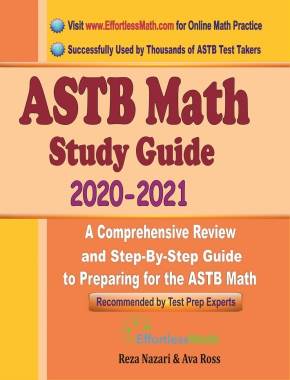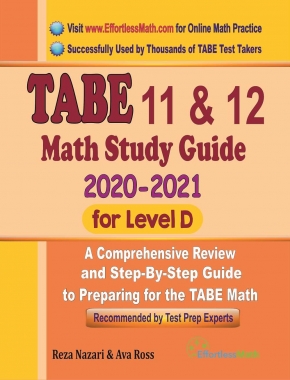How to Master Polynomial Functions: A Comprehensive Guide to Understanding and Solving Complex Zeros
[include_netrun_products_block from-products="product/6-south-carolina-sc-ready-grade-3-math-practice-tests/" product-list-class="bundle-products float-left" product-item-class="float-left" product-item-image-container-class="p-0 float-left" product-item-image-container-size="col-2" product-item-image-container-custom-style="" product-item-container-size="" product-item-add-to-cart-class="btn-accent btn-purchase-ajax" product-item-button-custom-url="{{url}}/?ajax-add-to-cart={{id}}" product-item-button-custom-url-if-not-salable="{{productUrl}} product-item-container-class="" product-item-element-order="image,title,purchase,price" product-item-title-size="" product-item-title-wrapper-size="col-10" product-item-title-tag="h3" product-item-title-class="mt-0" product-item-title-wrapper-class="float-left pr-0" product-item-price-size="" product-item-purchase-size="" product-item-purchase-wrapper-size="" product-item-price-wrapper-class="pr-0 float-left" product-item-price-wrapper-size="col-10" product-item-read-more-text="" product-item-add-to-cart-text="" product-item-add-to-cart-custom-attribute="title='Purchase this book with single click'" product-item-thumbnail-size="290-380" show-details="false" show-excerpt="false" paginate="false" lazy-load="true"] [include_netrun_products_block from-products="product/6-south-carolina-sc-ready-grade-3-math-practice-tests/" product-list-class="bundle-products float-left" product-item-class="float-left" product-item-image-container-class="p-0 float-left" product-item-image-container-size="col-2" product-item-image-container-custom-style="" product-item-container-size="" product-item-add-to-cart-class="btn-accent btn-purchase-ajax" product-item-button-custom-url="{{url}}/?ajax-add-to-cart={{id}}" product-item-button-custom-url-if-not-salable="{{productUrl}} product-item-container-class="" product-item-element-order="image,title,purchase,price" product-item-title-size="" product-item-title-wrapper-size="col-10" product-item-title-tag="h3" product-item-title-class="mt-0" product-item-title-wrapper-class="float-left pr-0" product-item-price-size="" product-item-purchase-size="" product-item-purchase-wrapper-size="" product-item-price-wrapper-class="pr-0 float-left" product-item-price-wrapper-size="col-10" product-item-read-more-text="" product-item-add-to-cart-text="" product-item-add-to-cart-custom-attribute="title='Purchase this book with single click'" product-item-thumbnail-size="290-380" show-details="false" show-excerpt="false" paginate="false" lazy-load="true"]

A Step-by-step Guide to Master Polynomial Functions and Complex Zeros
Step 1: Understanding Polynomial Functions
- Definition: A polynomial function is a mathematical expression involving a sum of powers in one or more variables, multiplied by coefficients. For example, \(f(x)=2x^3−3x^2+4x−5\).
- Degree: The highest power of the variable in the polynomial indicates its degree. For instance, \(f(x)=x^3+2x^2−x\) is a third-degree polynomial.
- Behavior and Graphs: The degree of the polynomial influences its graph shape. Polynomials of even degrees tend to have similar end behaviors, as do polynomials of odd degrees.
Step 2: Roots or Zeros of Polynomials
- Definition: A root or zero of a polynomial is a solution to the equation \(f(x)=0\).
- Finding Zeros: For lower-degree polynomials, you can find zeros by factoring, using the quadratic formula, or synthetic division. For higher degrees, numerical methods may be required.
Step 3: Complex Numbers
- Definition: A complex number is a number that can be expressed in the form \(a+bi\), where \(a\) and \(b\) are real numbers, and \(i\) is the imaginary unit satisfying \(i^2=−1\).
- Relevance to Polynomials: Not all polynomial equations have real-number solutions. When a polynomial does not have real zeros, it has complex zeros.
Step 4: Complex Zeros
- Understanding Complex Zeros: These are solutions to polynomial equations that are not real numbers. For example, the solutions to \(x^2+1=0\) are \(i\) and \(−i\).
- Conjugate Pairs: Complex zeros of polynomials with real coefficients always come in conjugate pairs, like \(a+bi\) and \(a−bi\).
Step 5: Fundamental Theorem of Algebra
- Statement: Every non-constant single-variable polynomial with complex coefficients has at least one complex root. This includes real numbers since they are a subset of complex numbers.
- Implications: This theorem guarantees that a polynomial of degree \(n\) has exactly \(n\) roots, counting multiplicities.
Step 6: Solving Polynomial Equations with Complex Zeros
- Methods: Use algebraic methods like factoring or the quadratic formula. When these fail, numerical methods or graphing may be employed.
- Example: Solving \(x^2+4=0\) leads to \(x=±2i\).
Step 7: Graphical Interpretation
- Real Zeros: Appear as \(x\)-intercepts on the graph of the polynomial.
- Complex Zeros: Do not appear on the graph but indicate oscillations or turning points near the real axis.
Step 8: Applications and Examples
- Practical Uses: Polynomial functions with complex zeros have applications in physics, engineering, and other sciences.
- Sample Problems: Practice by solving various polynomial equations, and analyzing the roots and graph behavior.
Step 9: Further Exploration
- Advanced Topics: Investigate further into complex analysis, polynomial long division, and numerical methods like Newton’s method.
- Software Tools: Utilize graphing calculators or software like MATLAB for complex polynomial analysis.
By following these steps and delving into each topic, you’ll gain a comprehensive understanding of polynomial functions and their complex zeros. Practice with different polynomial equations will further enhance your understanding.
Related to This Article
More math articles
- What Are The Optimization Problems: Beginners Complete Guide
- How to Find Factors of Numbers?
- Word Problems Involving Money
- 6th Grade IAR Math Worksheets: FREE & Printable
- How to Interpret Pie Graphs? (+FREE Worksheet!)
- Full-Length 7th Grade Common Core Math Practice Test-Answers and Explanations
- How to Find the Axis of Symmetry of Quadratic Functions?
- The Enchanted Forest of How to Compare Ratios – A Tale of Mathematical Adventure
- Money and Decimals Relation: A Step-by-Step Guide
- How to Verify Inverse Functions by Composition?

















What people say about "How to Master Polynomial Functions: A Comprehensive Guide to Understanding and Solving Complex Zeros - Effortless Math: We Help Students Learn to LOVE Mathematics"?
No one replied yet.